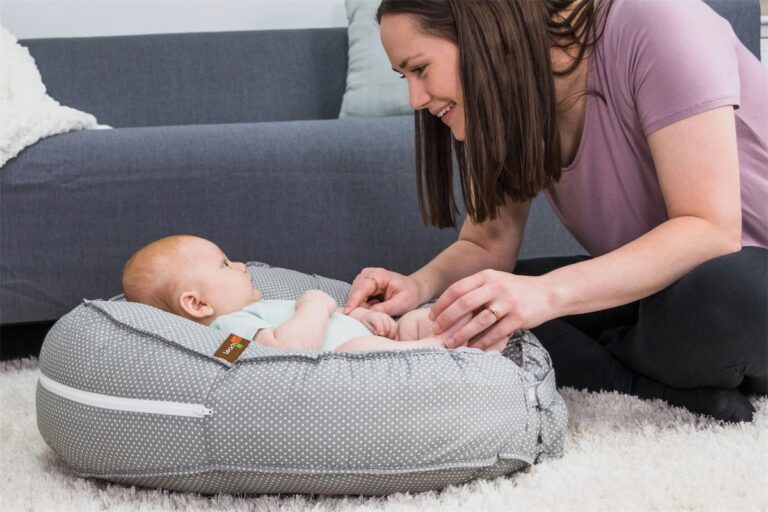Overzealous consumer product regulation is inviting new risks

“A zero-risk world doesn’t exist,” writes Bethany Mandel for the New York Post. This may seem obvious, but, to the Consumer Product Safety Commission (CPSC), it often seems like the goal.
The CPSC is an independent federal agency charged with protecting Americans against unreasonable risks from what it deems defective or dangerous consumer products. The agency has broad discretion to decide exactly what level of risk is acceptable and what products are risky.
We reviewed the CPSC’s data on a particular class of items — nursery products, like cribs, infant carriers, bassinets, baby mattresses, and highchairs — and found that the products themselves are not the biggest threat to infant safety, and the agency knows this.
The CPSC publishes an annual report, Injuries and Deaths Associated With Nursery Products Among Children Younger Than Age Five, which tabulates the number of injuries (requiring an emergency room visit) or deaths related to nursery products. The key words in that title are “associated with” because it turns out that not all injuries and deaths “associated with” a particular product are caused by the product. In many cases, the harm stems not from a flaw in the product, but from a consumer disregarding the user instructions and safety warnings provided by the manufacturer.
In fact, reviewing CPSC reports of nursery-product-related infant injuries and deaths, we found that most were caused by consumer misuse. From 2002 to 2021, for example, misuse of cribs was responsible for an average of 82% of crib-related deaths annually, compared with 18% caused by product defects. In each of the last four CPSC reports documenting these trends, crib defects made up less than 10% of total crib-related deaths, while misuse of the products accounted for more than 90%.
We saw the same pattern with other popular categories of nursery products, including bassinets, playpens, and infant carriers. Again, most infant deaths associated with these products were from people misusing them — not from failures of the products.
We’ve seen firsthand the crushing effect a negative CPSC ruling can have on a business. Our firm Pacific Legal Foundation represents Leachco, Inc., a family-owned business in Oklahoma that landed in the CPSC’s regulatory crosshairs in 2022. The CPSC demanded a recall of Leachco’s popular product, an infant lounger called the Podster, because of three infant deaths “associated with” the Podster. However, in all three cases, the deaths had stemmed, not from a defect in the Podster, but from consumer misuse. The CPSC said the Podster, which had sold more than 180,000 units, should be recalled because it was “reasonably foreseeable” that parents and caregivers might misuse the product. That standard could be used to ban virtually every product on the market.
Ultimately, Leachco prevailed before an administrative law judge, after months of litigation with the CPSC’s Kafkaesque bureaucracy. And the case isn’t over—the CPSC’s enforcement lawyers have appealed to the CPSC’s commissioners themselves, the people who approved the action in the first place. And in the meantime, the damage to Leachco’s reputation and bottom line, based on highly questionable regulatory determinations, was substantial and enduring.
Why would the CPSC be so overzealous in its enforcement? One likely reason involves bureaucratic incentives. The agency is, after all, charged with protecting the public from unreasonable risks. Naturally, CPSC employees want to avoid blame when a product could be “associated with” infant harm. So, it’s preferable, from the regulators’ perspective, to aggressively keep products off the market lest a single “defective” product slip through.
But it’s impossible to eliminate all risks, and any product could have a “reasonably foreseeable” potential for misuse. As a result, the CPSC’s enforcement actions end up being highly selective, arbitrary, and incoherent, as in the case of the Podster.
None of this is to minimize the seriousness of such incidents of harm or to suggest that some level of injury or death is “acceptable.” But if the goal is, rightfully, to minimize and prevent injuries and deaths, it’s vital that the agency construct a clear and accurate assessment of where the actual risk resides. And of course, this applies not only to nursery products, but to the vast array of consumer items subject to the CSPC’s regulatory jurisdiction.
In many cases, the CPSC would likely have a greater impact on consumer safety by focusing, not on recalls, bans, and other punitive measures, but on investing in more effective public education and awareness to promote proper product use. This would have the added benefit of allowing the CPSC to devote more of its limited enforcement resources to focusing on those products that truly do pose a health and safety risk to consumers, due to actual poor design or faulty manufacturing.
The CPSC can play an important role in protecting consumers against dangerous or risky products, but the agency’s overzealous regulatory approach is counterproductive and harmful. President Trump has pledged to halt the “regulatory onslaught” by reforming excessive and abusive regulatory processes—reining in the CPSC’s overzealous product regulators would be a good place to start.









